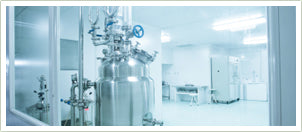- HOME
- LATEX MATTRESS REVIEWS
- TYPES OF LATEX
- LATEX FAQ
- LATEX TOPPERS
- LATEX & MEDICAL CONDITIONS
- LATEX & SLEEP DISORDERS
LatexMattress.org
Rated by Viewers
What is a Blended Latex Mattress?
Latex Production
In the natural world, latex is produced by a wide variety of plant species. Some of the most prolific latex producers are rubber trees, Hevea brasiliensis. This particular species hails from Brazil but is now grown worldwide, most especially on Asian rubber tree estates.
 The natural latex is obtained by "tapping" the trees, much as maple trees are tapped for maple syrup. The liquid latex is then processed using a mix of air, temperature control, and (in some cases) chemical additives to create premium bedding.
The natural latex is obtained by "tapping" the trees, much as maple trees are tapped for maple syrup. The liquid latex is then processed using a mix of air, temperature control, and (in some cases) chemical additives to create premium bedding.
Latex can also be synthesized in a lab using manmade chemical components. Synthesized latex can be a high quality bedding material, but no synthetic version has been able to match the natural resilience and responsiveness of latex bedding made with real, natural latex.
Blended Latex
A "blended latex" mattress is made up of a mix of natural and synthetic latex products. In most cases, the blended latex that you'll find on the market is a blend of 70% natural latex with 30% synthetic latex. A bed with the "blended latex" label is thus a 100% latex mattress, but not a 100% natural latex mattress.
Usually only latex produced using the Talalay method is blended. Talalay tends to be softer than Dunlop, so if you prefer the firmness offered by a Dunlop mattress, you may need to search out an all natural latex option. Talalay latex (and thus most blended options) is usually preferred by side sleepers since it minimizes pressure points, conforms to the body, and helps relieve pain.
Blended Latex vs. Natural Latex
When you buy an all natural latex mattress, you're investing in the hidden costs of agricultural management, the transportation of raw latex to processing facilities, and the complex processing methods that go into creating premium bedding from a liquid plant byproduct. That's what makes natural latex so expensive.
Natural latex is also one of the absolute best materials on the market for minimizing pressure-point related pain and unsatisfying sleep. The characteristics of natural latex make it more desirable than synthetic imitations, but blended latex offers most of the advantages of natural latex at a more manageable price. Blended latex bedding also ensures that you're getting a mattress that's 100% latex. It may not be all-natural latex, but you'll know you're getting the distinctive soft support of latex through and through (Learn the distinguishing characteristics of a 100% latex matress vs. a 100% natural latex mattress by reading through our latex mattress reviews).
Blended Latex Pros
- 100% latex (as opposed to hybrid latex/urethane beds).
- More affordable than 100% natural latex options.
- High percentage of natural latex maintains the springy, supportive softness of natural latex.
- Talalay production method means blended latex tends to be favored by side sleepers.
Blended Latex Cons
- Less expensive than 100% natural latex.
- Not an all-natural bedding option.
- Not as long-lasting as all-natural Dunlop latex.
- Talalay production method means blended latex is not recommended for persons who sleep on their backs or prefer a firm mattress.
 |
Overall, if you like a fairly soft bed, blended latex is an excellent latex bedding alternative to high-priced 100% natural latex. You're getting the best characteristics of natural latex – quick springback, support with softness, and measurable pressure point relief – at a more manageable price. Blended latex is undoubtedly a compromise option, but it's a good compromise. |





